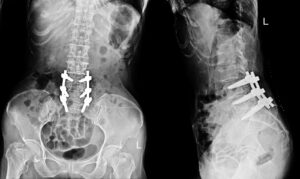Pain is a complex and subjective experience that can be caused by a variety of factors, including injury, illness, and chronic conditions. The types of pain can range from mild discomfort to severe, debilitating pain that can affect a person’s quality of life. As a medical professional, I find it important to educate my patients on the types of pain, so they can better understand the causes and treatment options available to them.
Acute Pain
Acute pain is a temporary type of pain that usually lasts for a few days or weeks. It is often caused by tissue damage or inflammation and is typically accompanied by swelling and redness in the affected area. Below are a few common types of acute pain.
Post-Surgical Pain: Pain after surgery is a common type of acute pain that usually lasts for a few days or weeks. Pain can be caused by the procedure itself or by the body’s healing process.
Trauma-Related Pain: Pain caused by an injury, such as a broken bone or sprained ankle, is also a form of acute pain. The severity and duration of the pain depend on the severity of the injury.
Dental Pain: Pain caused by dental procedures, such as tooth extraction, is another example of acute pain. The pain is usually caused by the inflammation and damage to the tissues surrounding the teeth.
Chronic Pain
Another of the types of pain is Chronic pain. It is a long-term form of pain that lasts for more than three months. It can be caused by a variety of conditions, such as arthritis, fibromyalgia, and nerve damage. Chronic pain can be debilitating and can affect a person’s quality of life.
Back Pain: Chronic back pain is a common form of chronic pain that can be caused by a variety of conditions, such as herniated discs and spinal stenosis. The pain can be constant or intermittent and can affect the lower back, upper back, or both.
Neuropathic Pain: This is a type of chronic pain that is caused by nerve damage and is often described as a burning or tingling sensation. It can be caused by conditions such as diabetes, multiple sclerosis, and shingles.
Headaches: Chronic headaches can be caused by a variety of conditions, such as tension headaches, migraines, and cluster headaches. The pain can be localized to one area of the head or can affect the entire head.

Treatment Options
The treatment of pain depends on which of the types of pain you are experiencing.
Medications: Pain medications, such as acetaminophen, ibuprofen, and opioids, can be used to manage pain. It is important to use these medications as prescribed.
Physical Therapy: Physical therapy can help reduce pain and improve mobility. This may involve exercises, stretches, and other forms of therapy. Physical therapy can help manage pain caused by chronic conditions such as back pain and arthritis.
Injections: Steroid injections can be used to reduce inflammation and alleviate pain. This may be a viable option for patients with chronic pain caused by conditions such as spinal stenosis and arthritis. Injections may also be used to treat migraines and other types of headaches.
Surgery: Surgery may be recommended for certain conditions, such as herniated discs or spinal stenosis. Surgery can provide long-term pain relief for conditions that do not respond to other forms of treatment.
Preventing Pain
Maintain a Healthy Weight: Excess weight can put a strain on the joints and lead to pain. Losing weight can reduce the risk of developing conditions such as arthritis and back pain.
Exercise Regularly: Regular exercise can help reduce pain and improve overall health. Exercise can help manage pain caused by chronic conditions such as back pain, arthritis, and fibromyalgia.
Practice Good Posture: Good posture can help reduce strain on the joints and prevent pain. Poor posture can cause pain in the back, neck, and shoulders.
Use Proper Ergonomics: Proper ergonomics can help reduce strain on the body and prevent pain. Ergonomics can help prevent pain caused by repetitive strain injuries such as carpal tunnel syndrome.
Avoid Smoking: Smoking can contribute to pain and slow down the healing process. Smoking can increase the risk of developing conditions such as arthritis and back pain.

It Doesn’t Have to Hurt Forever
With over 20 years of experience in treating different types of pain, my team and I provide personalized treatment plans that improve overall quality of life by reducing pain and increasing mobility.
Our approach to treatment focuses on the benefits of preventive care and minimally invasive surgeries, with a strong emphasis on clear communication and personalized attention. Our goal is to develop a comprehensive treatment plan that caters to our patient’s specific needs and goals.
If you’re experiencing spinal issues that are impacting your quality of life, please schedule a consultation with us. Our team is dedicated to providing expert care and support and has extensive experience in treating various types of pain.
















